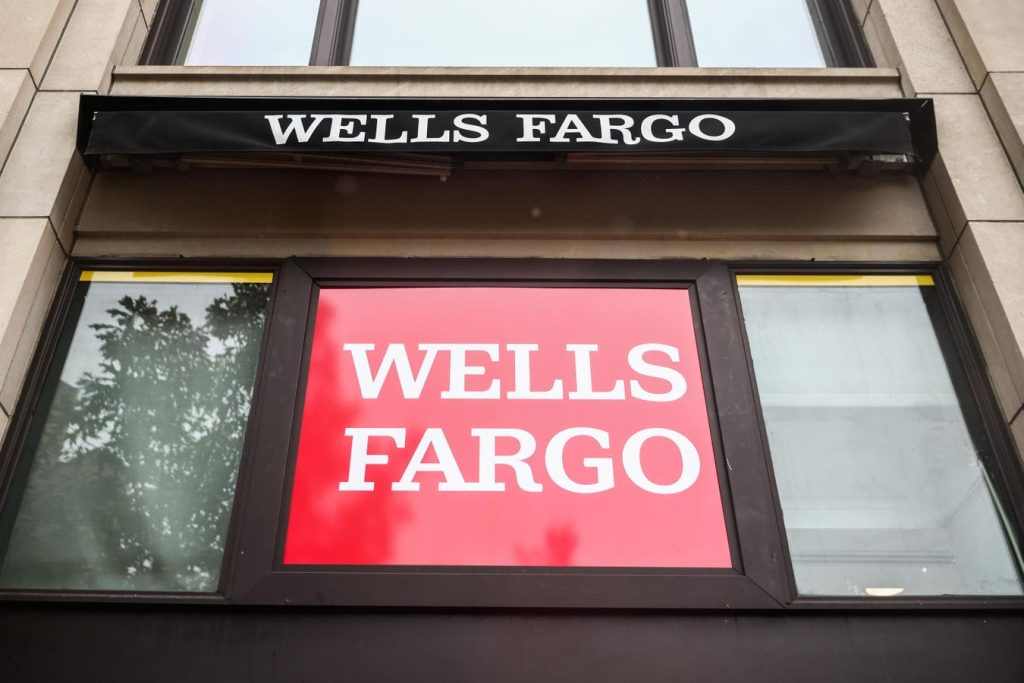Paragraph 1: Wells Fargo’s Q4 2024 Performance and Market Response
Wells Fargo concluded 2024 on a high note, exceeding market expectations with its Q4 results, leading to a 5% surge in its stock price. The bank reported a substantial 47% year-over-year increase in net income, reaching $5.1 billion or $1.43 per share, compared to $3.45 billion in the same period of the previous year. Revenue also saw a healthy increase, reaching $20.4 billion. This positive performance was primarily fueled by a resurgence in deal-making activity, boosting investment banking fees by an impressive 59% to $725 million. This surge in investment banking reflects a broader trend of renewed corporate confidence in the economic outlook, encouraging companies to pursue equity and debt financing, as well as mergers and acquisitions, which rebounded from the decade lows witnessed in 2023.
Paragraph 2: Mixed Performance in Traditional Banking Segments
Despite the positive momentum in investment banking, Wells Fargo experienced a decline in net interest income, a key metric for traditional banking performance. This figure fell by 7% to $11.8 billion due to a combination of lower interest income from floating-rate assets and reduced loan balances. The bank’s significant home loan business also faced challenges, delivering a mixed performance due to persistently high mortgage rates, dampening demand in the housing market. This mixed performance highlights the evolving landscape of the banking sector, with growth areas shifting towards investment banking and advisory services while traditional lending faces headwinds.
Paragraph 3: Industry-Wide Trends and Competitor Performance
Wells Fargo’s performance aligns with a broader positive trend observed across the U.S. banking sector during the earnings season. Rising stock markets boosted trading activity, while increased deal-making and a generally optimistic economic outlook contributed to robust performance. Competitors like JPMorgan Chase reported record annual profits for 2024, and Goldman Sachs also experienced a profit rebound after a post-pandemic slowdown. This suggests a strengthening financial sector propelled by favorable market conditions and increased corporate activity.
Paragraph 4: Wells Fargo’s Stock Volatility and Portfolio Comparison
Analyzing Wells Fargo’s stock performance over the past four years reveals considerable volatility, with annual returns fluctuating significantly: 61% in 2021, -12% in 2022, 23% in 2023, and 46% in 2024. This contrasts with the more stable performance of the Trefis High Quality Portfolio, a collection of 30 stocks, which consistently outperformed the S&P 500 over the same period. This comparison underscores the potential benefits of a diversified portfolio approach in mitigating risk and achieving more consistent returns compared to investing in individual stocks, even those of well-established institutions like Wells Fargo.
Paragraph 5: 2025 Outlook and the Impact of the Presidential Election
Looking ahead to 2025, Wells Fargo projects further improvement, anticipating net interest income growth between 1% and 3% compared to 2024. This projection is based on expectations of increased loan demand and lower deposit costs. The re-election of Donald Trump to the presidency is expected to have a significant impact on the financial sector, with potential benefits for Wells Fargo. Investors anticipate a less stringent regulatory environment under the Trump administration, including potential easing of antitrust rules and a reduction in compliance costs. These changes could facilitate increased revenue generation through higher deal volumes and lending activity, as well as directly boost profitability. Furthermore, Trump’s historically pro-business stance, including a preference for tax cuts, is viewed as potentially beneficial to the bottom lines of banks. Lower interest rates and increased political certainty following the election are also expected to stimulate investment banking and M&A activity, aligning with Wells Fargo’s own positive outlook and strong pipeline for its investment banking business in 2025.
Paragraph 6: Potential for Asset Cap Relief and Valuation
A key development that could significantly impact Wells Fargo’s future is the potential easing of the $1.95 trillion asset cap imposed in 2018 following the fake accounts scandal. This cap has restricted the bank’s growth in lending and deposit-taking, placing it at a disadvantage compared to competitors like JPMorgan Chase. If the incoming administration revisits this restriction, Wells Fargo could experience a renewed period of growth in its balance sheet and earnings. Since the scandal, the bank has strategically focused on higher-return and less capital-intensive businesses like investment banking. The removal or easing of the asset cap would allow Wells Fargo to leverage growth opportunities and potentially regain lost ground. Currently, the Trefis valuation for Wells Fargo’s stock stands at approximately $67 per share, slightly below the current market price. This suggests that while the market has responded positively to recent performance and future prospects, there remains some uncertainty regarding the full extent of the bank’s recovery and future growth potential.

